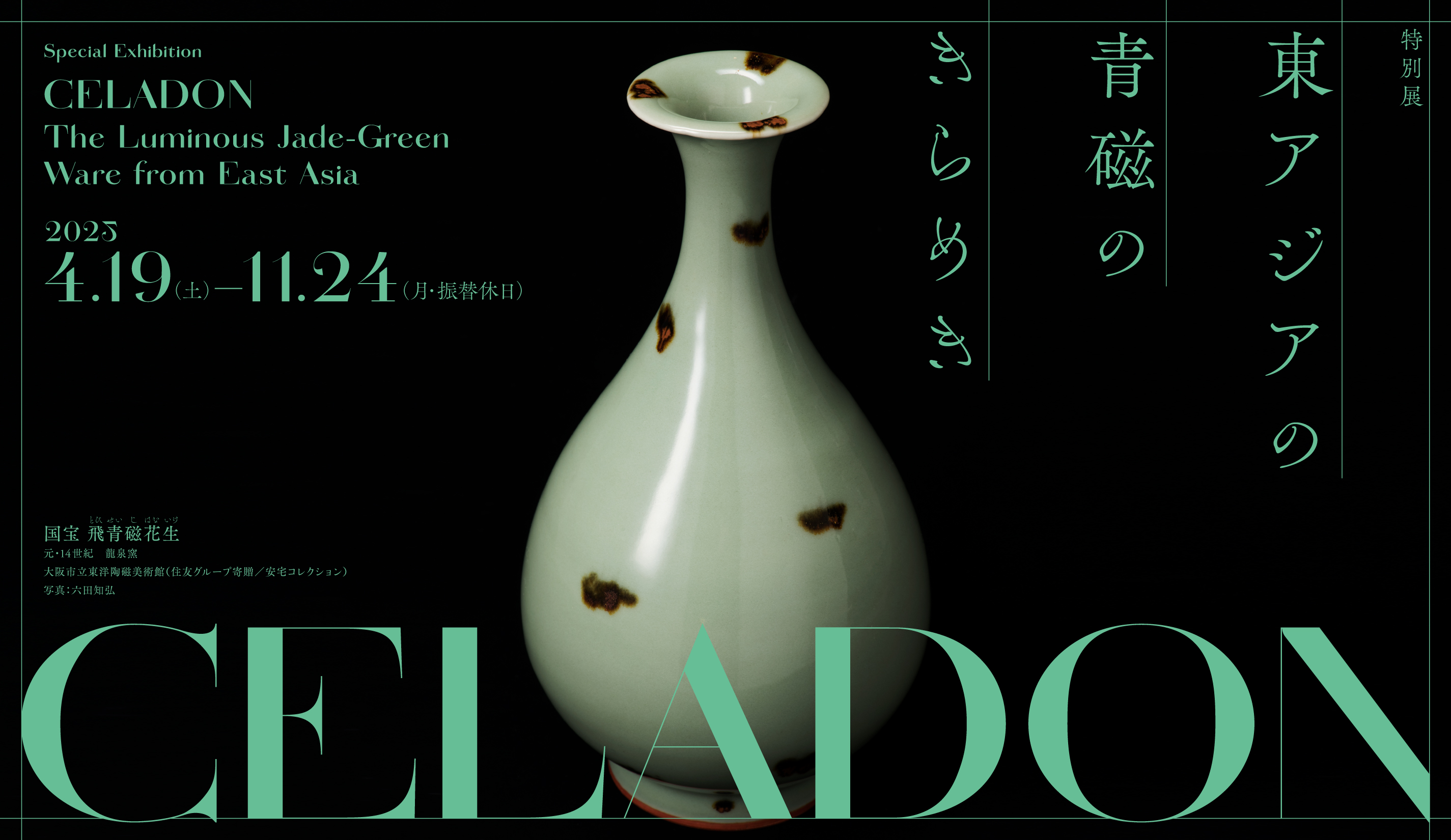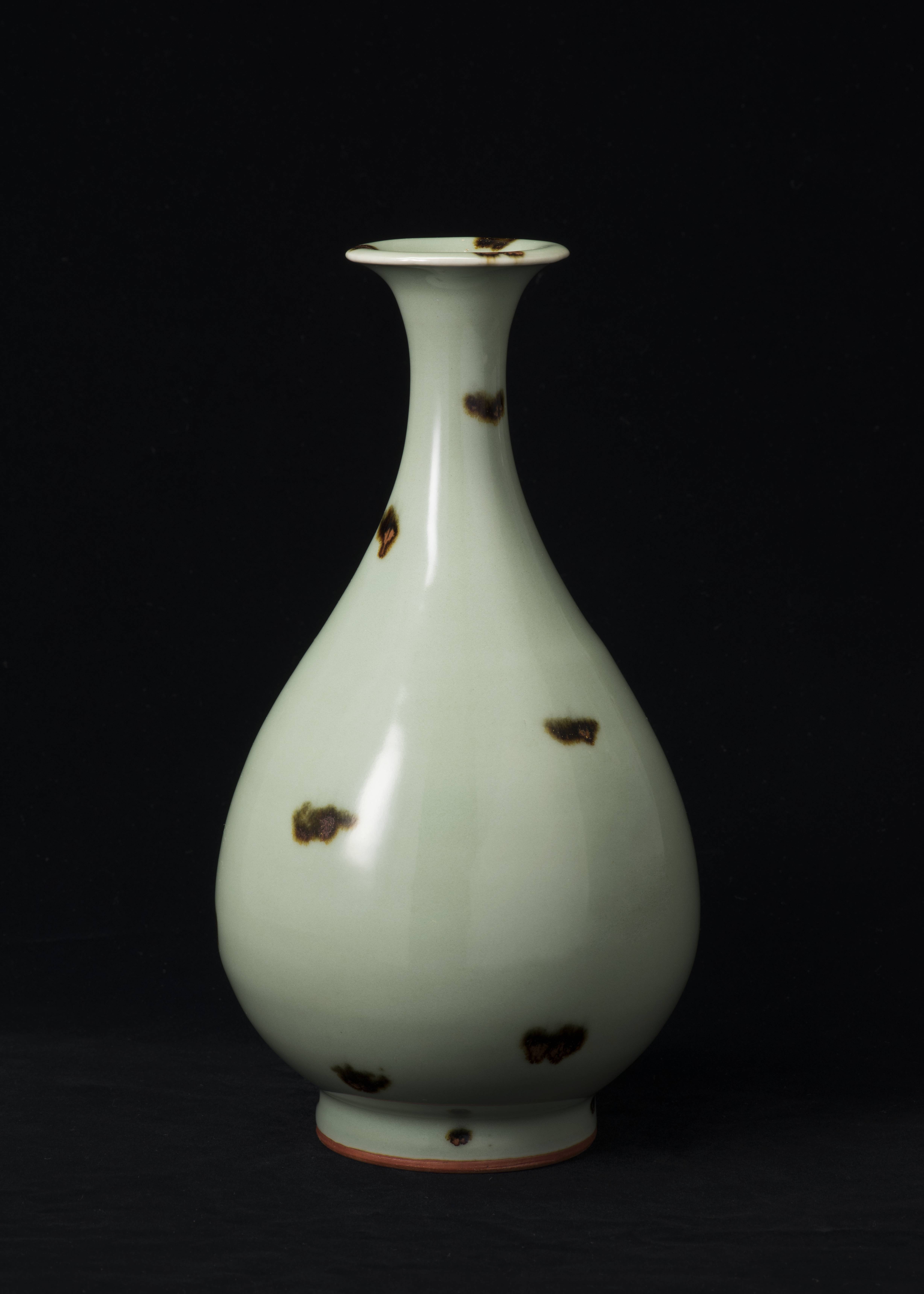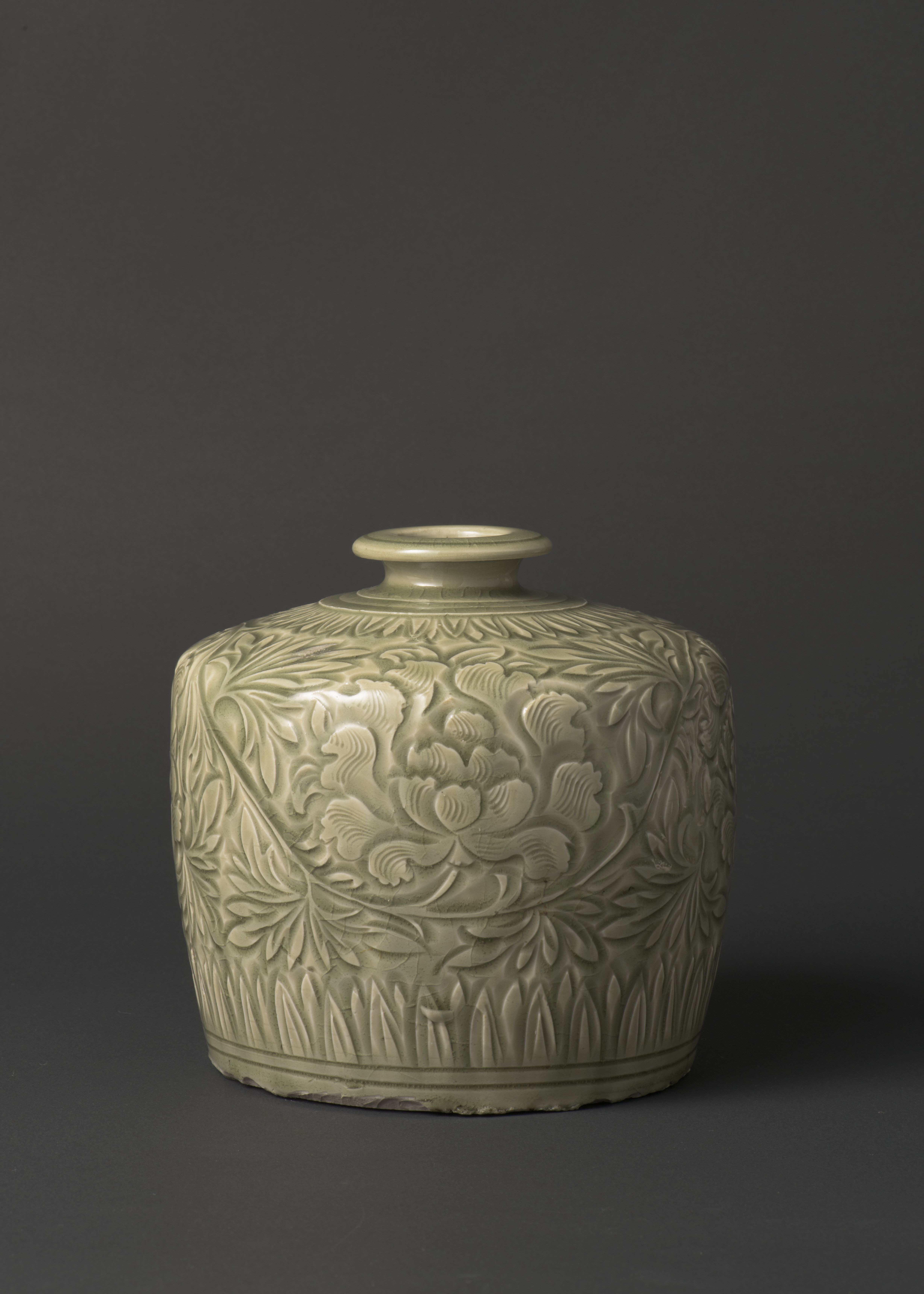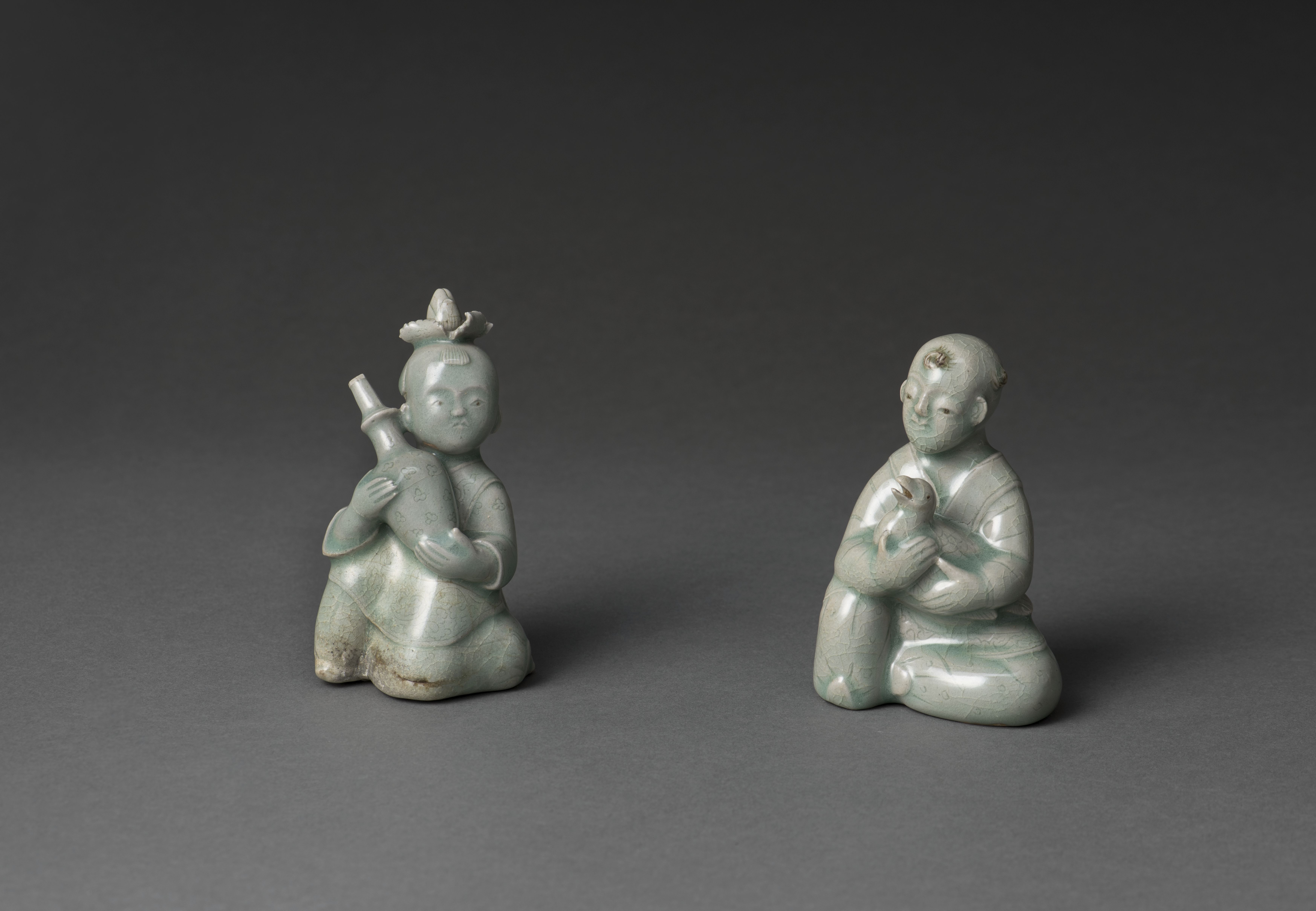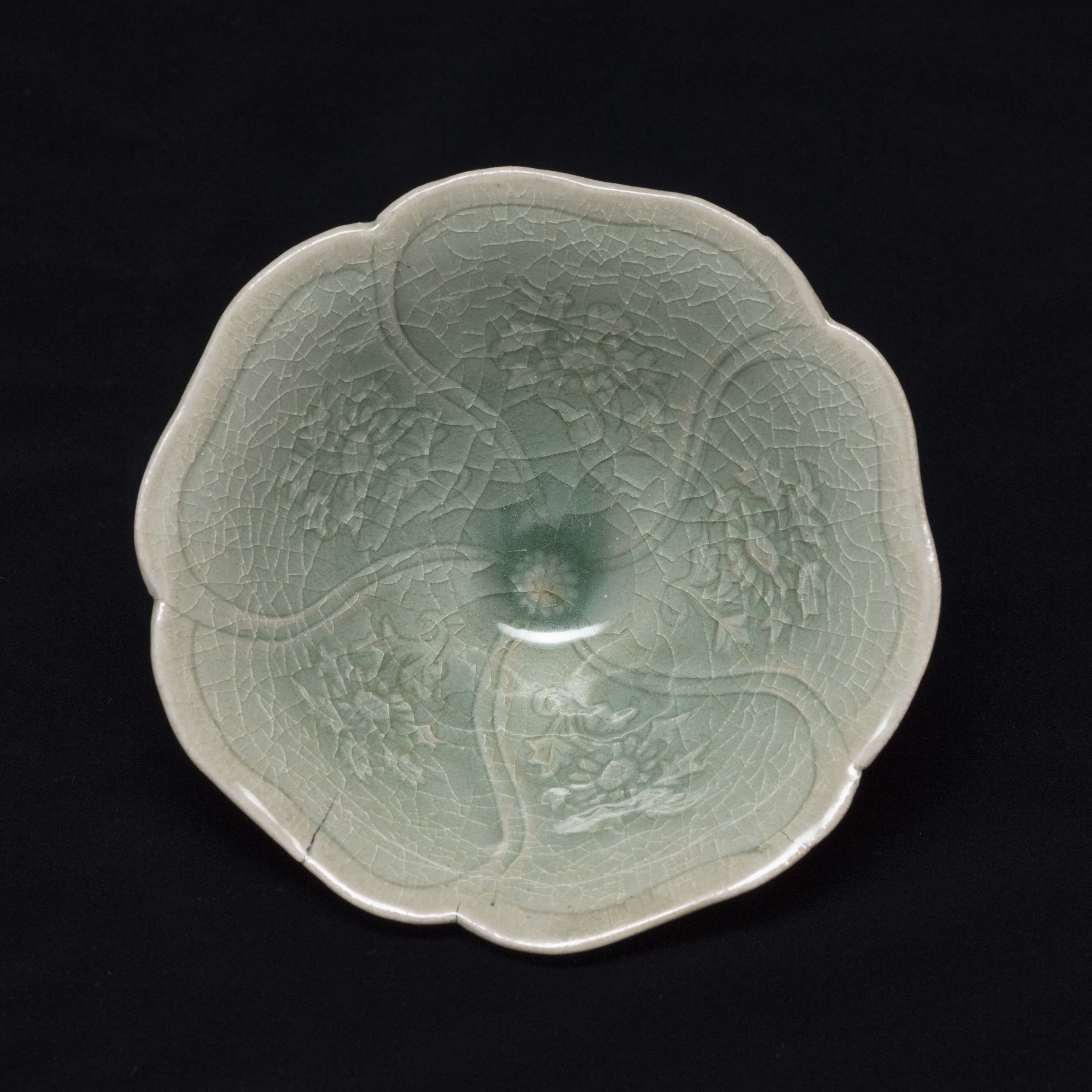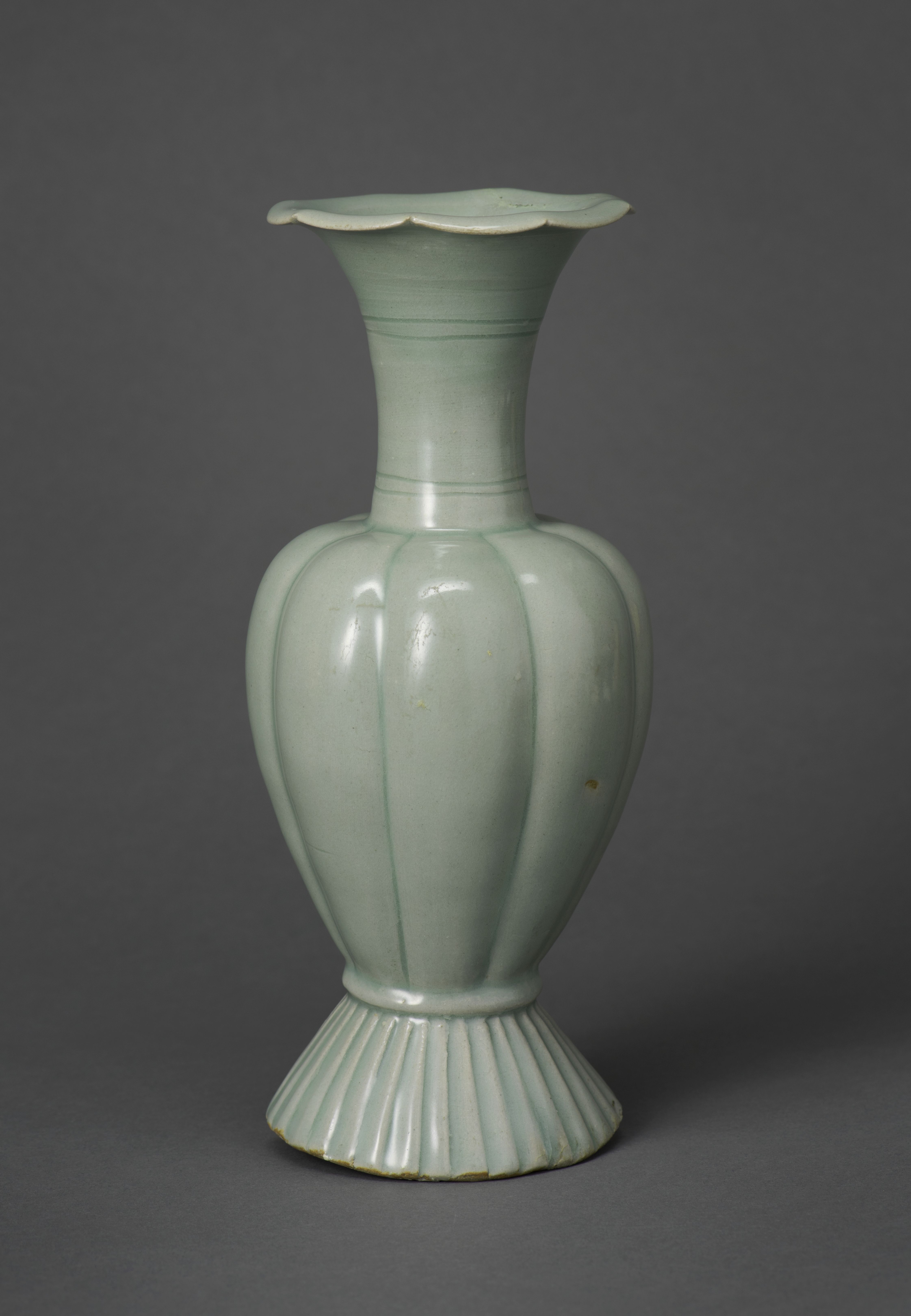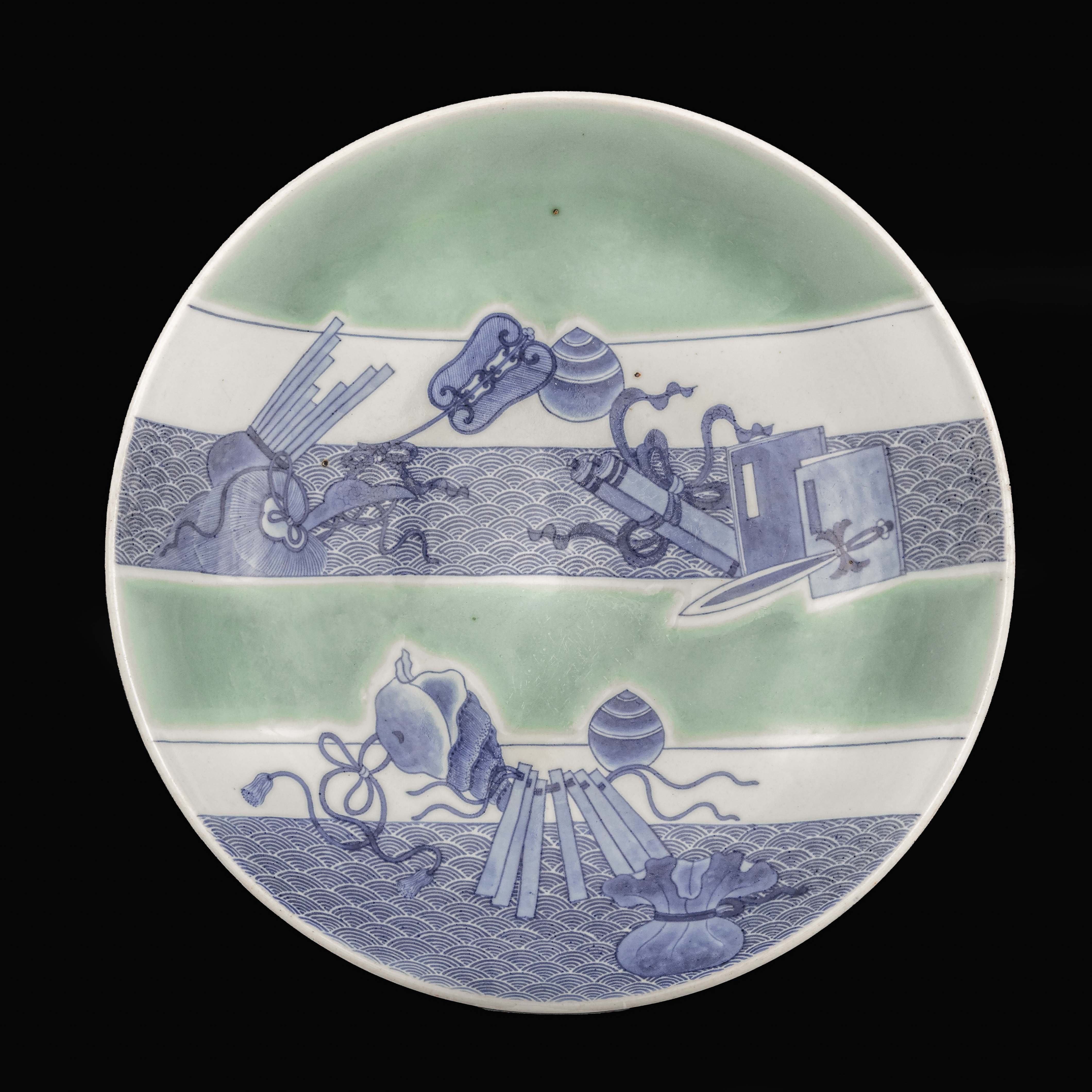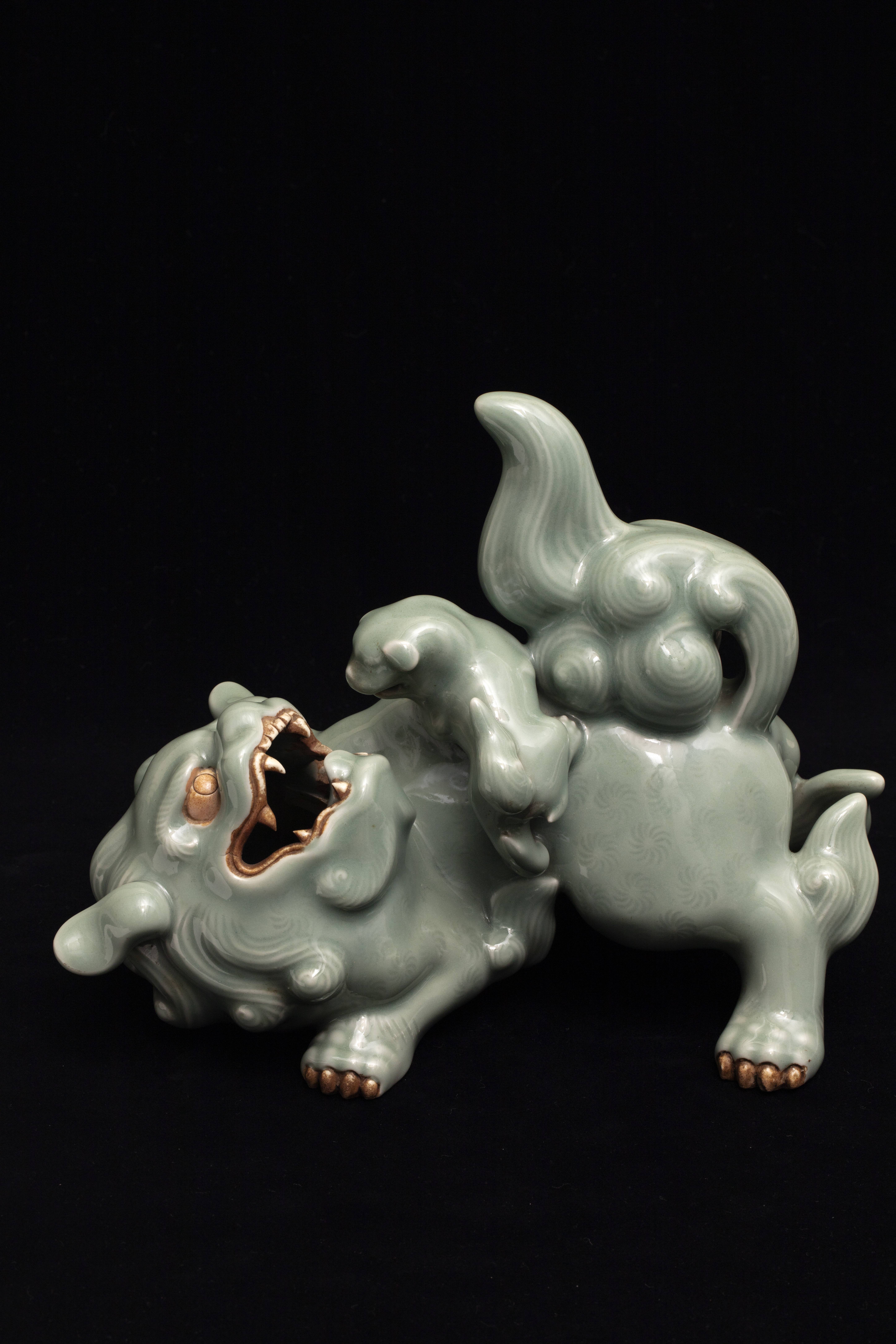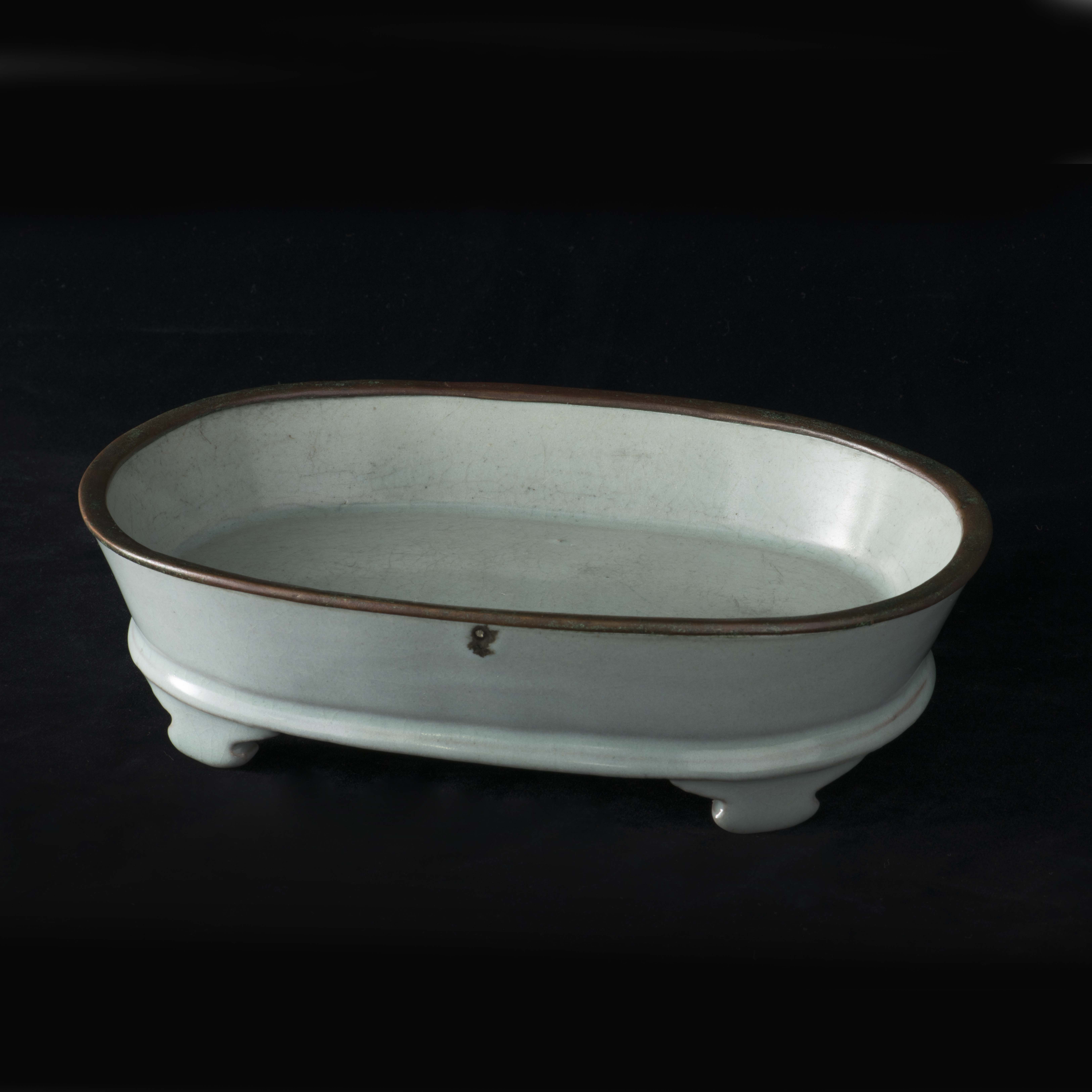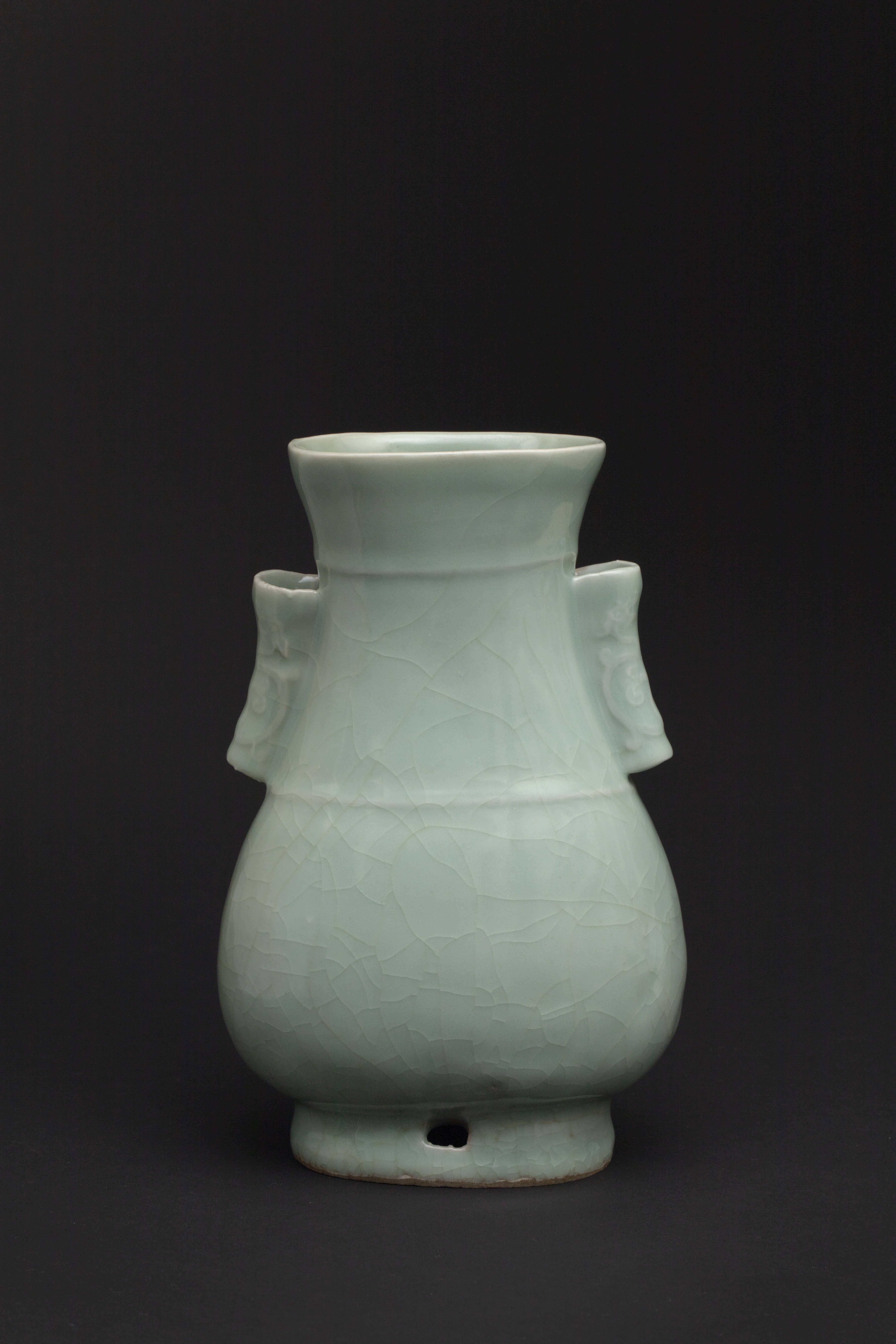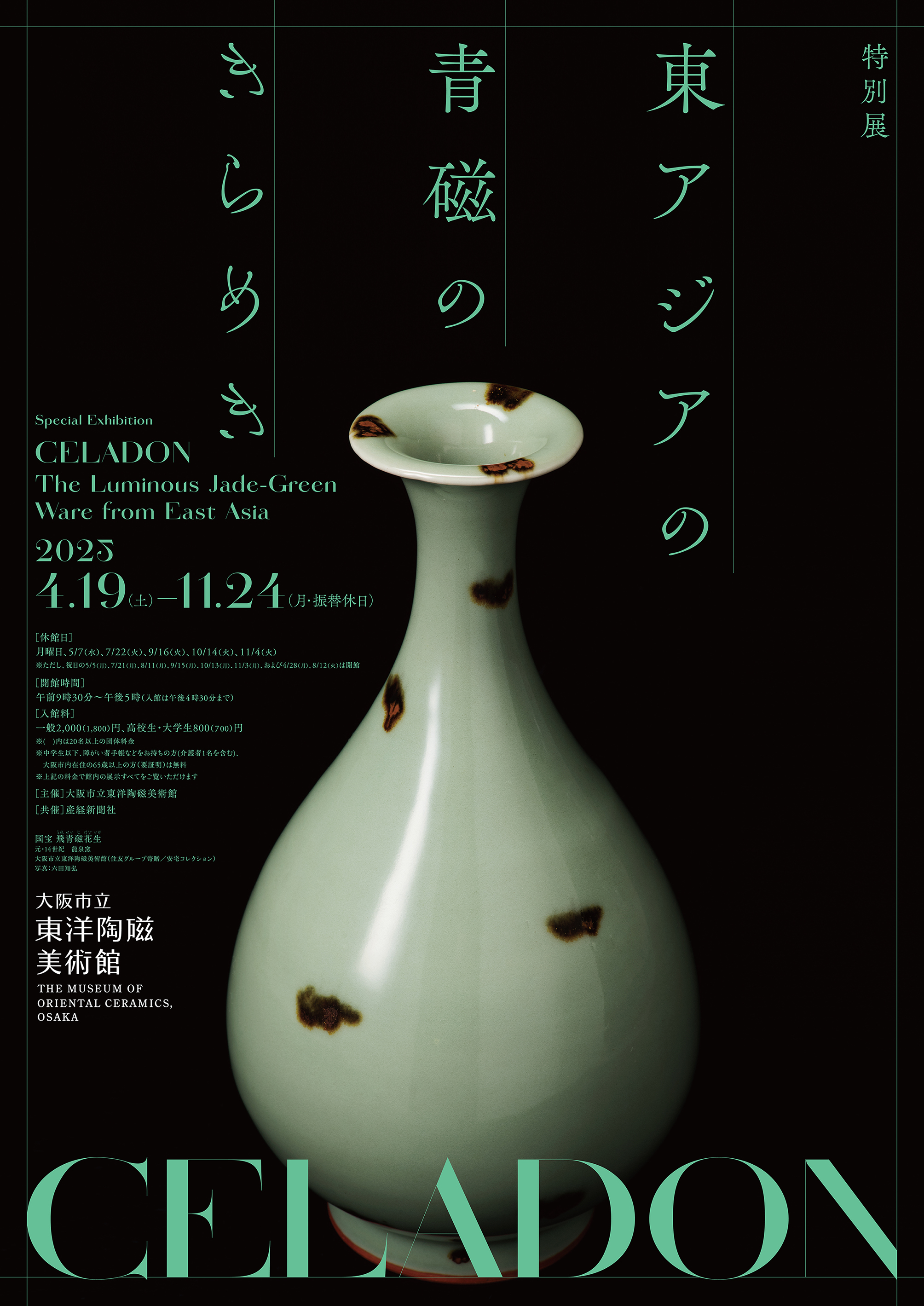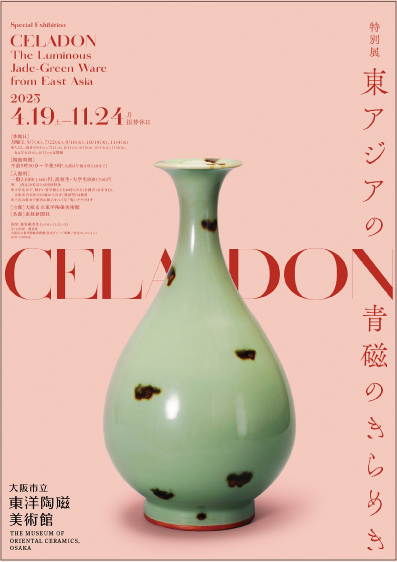Celadon is a type of ceramic ware covered with a glaze containing a very small amount of iron and fired to a high temperature to produce a blue-green color. Celadon has a rich, enduring history: it originated in China in the second century and later spread to Korea, Japan, and eventually around the world, evolving through various developments and refinements. Celadon has played a significant role in the history of East Asian ceramics. Its beauty has become a source of admiration as well as a symbol of power and wealth.
The compelling charm of celadon lies in the unparalleled beauty of the glaze color, which can subtly change depending on various conditions, including the kiln environment and the color of the clay body. Such variations contribute to the rich and diverse expressions found in celadon ware.
In China, various terms were used to express the beauty of celadon. The Tang writer Lu Yu praised celadon in his monograph Chajing (The Classic of Tea), describing it as leiyu (like jade) and leibing (like ice). The Tang poet Lu Guimeng celebrated the exquisite mise (secret color) of the Yue celadon glaze in his poem Mise Yueqi (Secret Color Yue Ware), depicting it as if the green hues were drawn from the trees of the mountains. Meanwhile, Goryeo celadon from the Korean Peninsula was called bisaek (jade-green color), and people admired its beauty. One widely accepted theory about the origin of the term “celadon” used in Western countries is that it was taken from the name of a character in a seventeenth-century French novel who wore a bluish-green garment.
This exhibition showcases the masterpieces of Chinese and Korean celadon as well as Japanese and modern celadon works selected from the MOCO Collection. We hope you enjoy the charm and significance of this remarkable achievement in the history of East Asian ceramics.
Please do not miss not only the permanent exhibition but also the special displays featuring signature works from the MOCO Collection. Additionally, in the exhibition galleries, you will spot the works selected for “The Treasures of Osaka—20 Selected Treasures from the MOCO Collection,” a project organized in commemoration of hosting the Expo 2025 Osaka, Kansai, Japan.
◉ Highlights of the Exhibition
1. An array of celadon masterpieces from the MOCO collection, including the National Treasure tobi seiji
This exhibition features celadon masterpieces and rare works, primarily from China and Korea, selected from the unparalleled world-class ceramic collections of MOCO, the Ataka Collection and the Rhee Byung-Chang Collection. Enjoy an array of enchanting works, including the National Treasure bottle known as tobi seiji (iron-scattered celadon) and the Important Cultural Property works, such as the mallet-shaped vase with phoenix handles, the bottle with an elegantly carved peony scroll design, and the ewer with an inlaid decoration of charming boys and baoxianghua scroll design.
2. What is “celadon”?—Exploring through the multi-faceted charms of celadon from China, Korea, and Japan
Celadon wares have an innumerable variety of hues, depending not only on the production period or place but even on the subtle change in the environment inside the same kiln. This exhibition provides a perfect opportunity to explore the variegated and profound charm of celadon through works produced in different periods and regions of China, Korea, and Japan.
3. A special project commemorating the Expo 2025 Osaka, Kansai, Japan: “The Treasures of Osaka—20 Selected Treasures from the MOCO Collection”
Celebrating the hosting of Expo 2025 in Osaka, MOCO selected the 20 best treasures from its collection. During this event, these 20 pieces will be displayed in various galleries of all the exhibitions held in this museum. Enjoy exploring the galleries to discover these works and choose the one you believe is the best.
◉ Exhibition Content and Examples of Objects to be on Display
Part 1 (Gallery 1)
Priceless Treasures—Celadon Masterpieces from China and Korea
This gallery features ten world-class masterpieces of Chinese and Korean celadon from the MOCO Collection, including the renowned National Treasure celadon bottle known as tobi seiji.
Part 2 (Galleries 2 and 3)
Sparkling Jade Ⅰ,Ⅱ —The Exquisite Goryeo Celadon
Goryeo celadon, its beautiful glaze being compared to the color of jade, was valued even higher than gold and silver wares. This gallery showcases the beauty and charm of these precious works.
Part 3 (Gallery 7)
Importation, Creation, and Continuity—The Art of Japanese Celadon
In Japan, Chinese celadon has been highly valued since ancient times. In the 17th century, the production of celadon began in Arita and later spread to other regions. The technique has been passed down through generations, and celadon production continues today. This gallery explores the charm of Japanese celadon, showcasing works from the 17th century to the modern and contemporary periods.
Part 4 (Galleries 10 and 11)
An Array of Jade-Green BeautyⅠ,Ⅱ—Chronology of Chinese Celadon
This section traces the chronology of Chinese celadon from the Eastern Han dynasty to the Ming dynasty by showing representative works from the MOCO Collection, including Yue ware, Yaozhou ware, Ru ware, Southern Song Guan ware, and Longquan ware.






